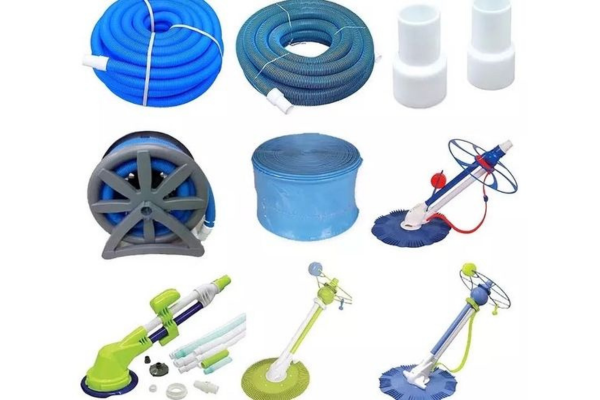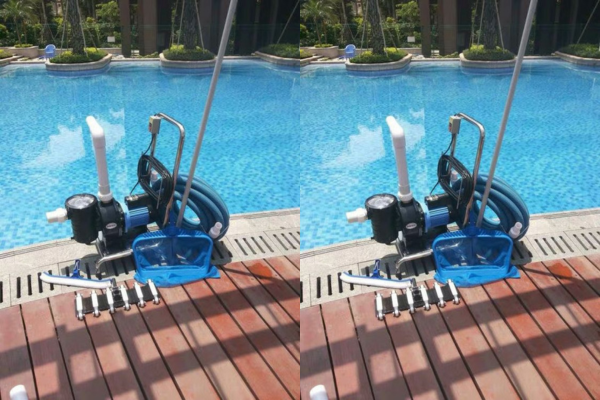Maintaining a clean and inviting pool can feel like a constant battle. While manual cleaning methods like skimming and netting are effective, they can be quite time-consuming and labor-intensive. Robotic pool cleaners offer a welcome alternative, automatically scrubbing and vacuuming your pool, leaving you more time to relax and enjoy your backyard oasis.
Understanding Pool Cleaners with Hoses

Pool cleaners with hoses play a crucial role in the maintenance and upkeep of swimming pools by ensuring efficient cleaning of debris and maintaining water quality.
Definition of Pool Cleaner
A pool cleaner is a device designed to automate the process of cleaning swimming pools, thereby reducing manual labor and ensuring consistent cleanliness. Its primary purpose is to remove debris, dirt, and algae from the pool’s floor and walls and maintain the proper chemical balance of the pool water.
Importance of Using a Hose with a Pool Cleaner
Hoses are essential components for many types of pool cleaners, particularly suction-side and pressure-side cleaners.
Transport of Debris: Hoses help transport debris from the pool to the filtration system or debris bag, depending on the type of cleaner.
Mobility and Reach: Hoses provide the necessary reach and flexibility, allowing the cleaner to navigate various parts of the pool efficiently.
Types of Pool Cleaners with Hose
Robotic Pool Cleaners: While not all robotic cleaners use hoses (many are corded electrically), some hybrid models use hoses to boost water filtration and debris removal.
Pressure-Side Cleaners: These cleaners use the pressure of the water returned to the pool from the pump to move around the pool and pick up dirt and debris into a bag. They are effective for collecting larger debris and reduce wear on the pool’s filter system.
Suction-Side Cleaners: Attached via a hose to a suction line in the pool, these cleaners use the suction power of the pool’s pump to move around the pool and suck debris directly into the pool’s filter. They are simple in design and effective for general pool cleaning.
Components and Functions of Pool Cleaners with Hoses

Pool cleaners designed with hoses are critical for maintaining clean and healthy swimming environments. Understanding the components, particularly the role of the hose, can help users optimize the functionality and longevity of their pool cleaning systems.
Components of a Pool Cleaner
Motor or Pump: Drives the cleaner and provides the necessary suction or pressure power.
Filter or Debris Bag: captures and collects debris removed from the pool.
Hoses serve as conduits for moving water and debris to and from the cleaner.
Brushes or scrubbers: Attached at the base or sides, these help dislodge debris from the pool surfaces.
Wheels or tracks: Facilitate movement around the pool for thorough cleaning coverage.
The hose plays a particularly critical role by connecting the cleaner to the pool’s filtration system or directing the water flow necessary for the cleaner’s movement and debris collection.
Role of the Hose in the Pool Cleaning Process
Mobility: It provides the cleaner with the flexibility to navigate across various parts of the pool, ensuring no area is left uncleaned.
Debris Suction: For suction-side cleaners, the hose is vital for transporting debris from the pool into the filtration system. In pressure-side cleaners, it channels clean, pressurized water back into the cleaner to facilitate debris capture in an attached bag.
Water Circulation: Hoses can help distribute filtered or chemically treated water throughout the pool, aiding in maintaining water clarity and hygiene.
Common Features of Pool Cleaners with Hoses
Length: The length of the hose directly impacts the cleaner’s ability to cover the entire pool. It is typically designed to reach the farthest point of the pool from the attachment site.
Durability: Hoses must withstand constant exposure to pool chemicals and environmental factors. Therefore, they are made from materials that can resist degradation, such as reinforced plastics or high-grade polymers.
Flexibility: A good hose must be flexible enough to allow the cleaner to move freely but robust enough to avoid kinks and tangles that can impede the cleaning process.
Practical Usage Tips for Pool Cleaners with Hoses

Operating a pool cleaner with a hose efficiently and maintaining it properly can significantly enhance its performance and extend its lifespan. Here are some practical tips on how to use, maintain, and troubleshoot pool cleaners with hoses.
How to Use a Pool Cleaner with a Hose
Step 1: Assembly: Assemble the pool cleaner according to the manufacturer’s instructions. This typically includes attaching the hose sections to the cleaner body and ensuring a secure connection.
Step 2: Connecting to the Pump: Attach the open end of the hose to the pool’s skimmer or dedicated suction line. Some models may require an adapter.
Step 3: Priming the Hose: Before turning on the pump, submerge the hose in the pool to fill it with water. This removes air pockets that can impede the cleaner’s suction power.
Step 4: Starting the Cleaner: Turn on the pool’s filtration system. Adjust the hose length and cleaner settings if necessary to ensure it reaches all areas of the pool.
Step 5: Monitoring: Monitor the cleaner during its first few cycles to ensure it is operating correctly and adjusting its route to cover the entire pool surface.
Maintenance Tips for Pool Cleaner with Hose
Regular Cleaning: After each use, remove debris from the cleaner’s filter or debris bag. Rinse the hose with fresh water to remove any chlorine or chemical residue that can weaken the material over time.
Periodic Inspections: Regularly inspect the hose for signs of wear, such as cracks or stiffness, which can lead to leaks or decreased efficiency. Also, check connections and swivels for tightness.
Proper Storage: During the off-season or when not in use for extended periods, store the hose flat and out of direct sunlight in a cool, dry place to prevent damage from UV exposure and temperature extremes.
Troubleshooting Common Issues
Loss of Suction: Check for leaks in the hose, which can decrease the cleaner’s suction power. Ensure that all connections are secure and the hose is not blocked.
Tangling and Kinking: To prevent the hose from tangling, lay it straight and allow it to relax before each use. If kinking occurs, replace stiff or old hose sections.
Inadequate Pool Coverage: If the cleaner is not reaching all parts of the pool, adjust the hose length, check for blockages, and ensure the cleaner’s settings are appropriate for your pool’s size and shape.
Selection and Purchasing Guide for Pool Cleaners with Hoses

Choosing the right pool cleaner with a hose requires understanding several factors that influence its performance and suitability for your pool. Here’s a guide to help you make an informed decision.
Choosing the Best Pool Cleaner with Hose
Pool Size and Type: The dimensions and type of your pool (inground or above ground) will determine the required hose length and cleaner type. Larger pools may need cleaners with longer hoses and higher power to cover the entire area effectively.
Cleaner Efficiency: Assess the cleaner’s ability to handle different types of debris and its overall energy efficiency. Efficient cleaners will provide thorough cleaning without excessive energy consumption.
Hose Features: Look for hoses that are durable and flexible enough to navigate your pool without tangling. Also, consider hoses with UV protection if your pool is exposed to direct sunlight to prevent degradation.
Top Brands Offering Pool Cleaners with Hose
Hayward: Known for reliability and efficiency, Hayward offers models like the PoolVac XL, which is renowned for its powerful suction and advanced steering capabilities to clean the pool’s floor and walls thoroughly.
Pentair offers the Kreepy Krauly series, which is popular for its durability and superior cleaning pattern technology. Its models are well-suited for various pool types and sizes.
Zodiac: Known for the Baracuda series, Zodiac cleaners are easy to install and maintain, making them a favorite among residential pool owners for their simplicity and effective cleaning.
Comparison of Different Models of Pool Cleaners with Hoses
Features: Look at specific features like the type of filtration system, the material of the hose, and ease of assembly. For instance, some models might offer patented anti-tangle hoses or enhanced scrubbing features.
Performance: Evaluate how well the cleaner removes fine and large debris, its ability to climb walls, and whether it can handle different pool surfaces like tile, vinyl, or concrete.
User Feedback: Read customer reviews to gauge common satisfaction levels and any recurring issues with specific models. Reviews can provide insights into long-term durability and the effectiveness of customer support.
Expert Insights and Industry Terminology for Pool Cleaners with Hoses

Gaining a deeper understanding of pool cleaners with hoses through expert reviews, professional tips, and clear definitions of industry terminology can significantly enhance your ability to choose and use these devices effectively.
Expert Reviews of Pool Cleaners with Hoses
Expert reviews often emphasize the efficacy and reliability of various pool cleaner models.
Efficacy: Professionals assess how well different models manage debris, their adaptability to various pool shapes and sizes, and their effectiveness on different types of pool surfaces.
Reliability: Durability and the frequency of required maintenance are also key points of focus. Experts often discuss the long-term performance of pool cleaners in real-world settings, noting any common mechanical issues or failures.
Recommended Models: Based on their assessments, experts might recommend certain models for specific needs—such as robotic cleaners for complex pool shapes or suction-side cleaners for pools in areas with heavy foliage.
Tips from Pool Maintenance Professionals on Using a Cleaner with Hose
Pool maintenance professionals provide valuable tips on maximizing the benefits of using hose-equipped pool cleaners.
Proper Installation: Ensuring that the cleaner is correctly set up, including proper hose length and secure connections, can significantly impact its efficiency. From my experience, an improperly installed hose can lead to poor suction and incomplete cleaning.
Regular Maintenance: Professionals advise regularly checking the hose for leaks, kinks, or signs of wear and replacing it when necessary to maintain optimal performance.
Optimal Use: Using the cleaner during non-peak hours and ensuring the pool’s chemistry is balanced before cleaning can also enhance the cleaner’s effectiveness and longevity.
Terminology Related to Pool Cleaners
Understanding the technical terms used in the industry can help you navigate product descriptions and manuals more effectively.
Utilizes the suction power of the pool’s filtration system to move around the pool and vacuum debris into the filter.
Pressure-Side Cleaner: Operates using the pressure of water returned to the pool from the pump, driving the cleaner and collecting debris in a separate bag.
Robotic cleaners are autonomous units with their own filtration systems, powered by electric motors, and frequently programmable for customized cleaning.
Backwashing is the process of cleaning the pool’s filter by reversing the flow of water through it to remove trapped debris.
Cyclonic Suction: A technology used in some pool cleaners that creates a powerful vortex to lift and remove debris more effectively.
Expert insights and tips can guide you to make informed decisions when selecting and using pool cleaners with hoses. Additionally, understanding industry-specific terminology enhances your ability to comprehend product features, operational instructions, and maintenance requirements, ensuring you get the most out of your pool cleaning investment.

Meet David Thomas, a seasoned professional with nearly 8 years of experience specializing in inspecting and resolving issues related to swimming pools. With his expertise and meticulous attention to detail, David ensures the safety and functionality of pools, making them a refreshing oasis for all to enjoy. Whether it’s troubleshooting equipment or maintaining water quality, David’s proficiency guarantees top-notch solutions tailored to meet every pool owner’s needs.
